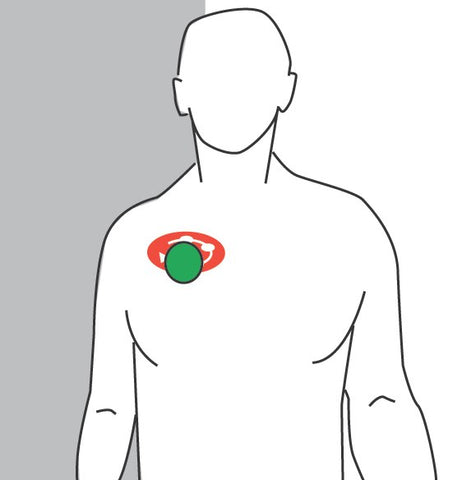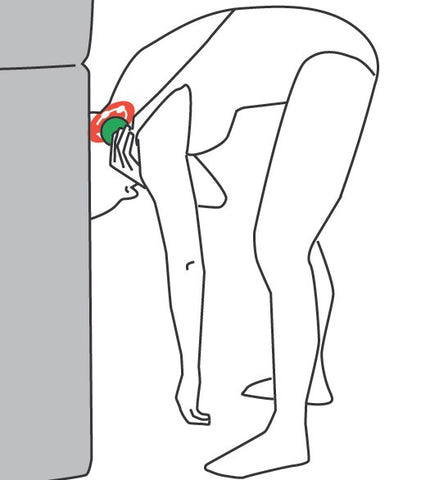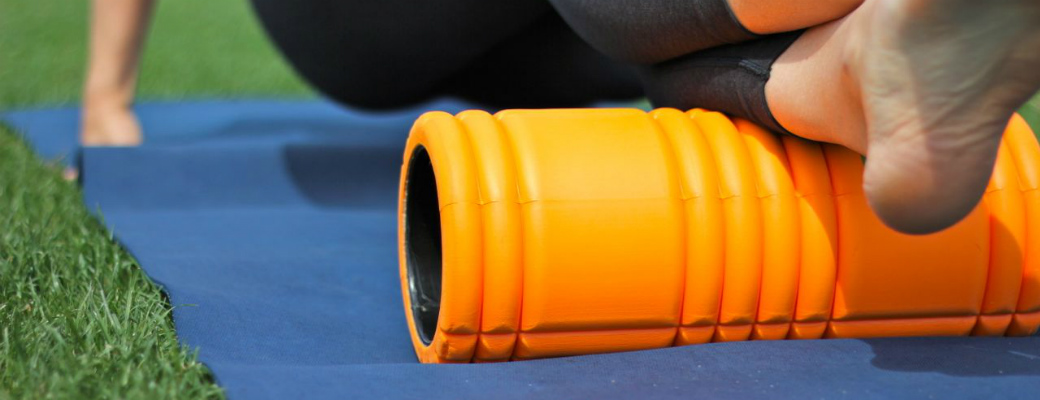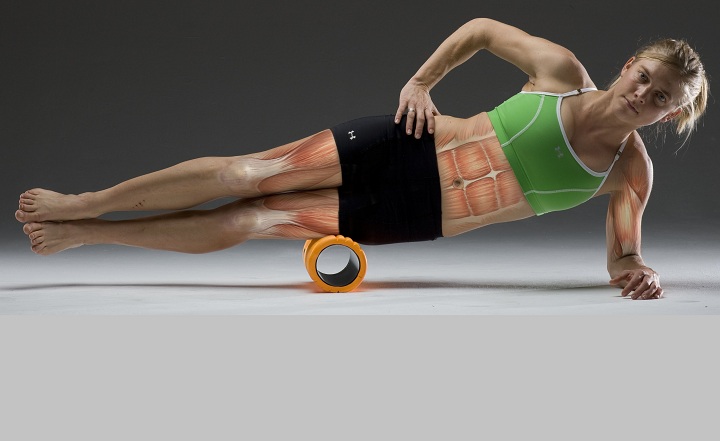The Most Undervalued Type of Resistance
The use of bands in training is nothing new in the fitness and sports performance industries. That being said, the popularization of band training has created one hell of a double-edged sword for producing results while staying healthy in the process.
Why? Coaches and athletes alike simply don’t know how to intelligently program band training to achieve the mass amounts of benefit that these tools are truly cable of.
When strategically sprinkled into programming, bands provide an exponential upside to build muscle, get strong and explosive and stay healthy. But if you don’t have a plan and purpose for your band based training, this tool can be brutally tough on your joints and tendons and may even lead to injuries.
Here’s how to implement band work into each major area of training, from prehab to power development and everything in between. But be careful, as amazing as band training can be, it can bite you in the ass if you don’t stick to smart programming and execution. Don’t worry, I’ve got you covered!
Corrective Exercise & Prehabilitation
We quickly forget that band work was first popularized in physical therapy and rehabilitation clinics for a quick and easy way to start “strengthening” after coming off injury or surgery. But why were bands the original tool of choice for clinicians to load their patients?
Well, bands are about as simple and convenient as resistance training gets. But the fact is the type of accommodating resistance that the bands offer creates a novel training stimulus to musculature that can be highly advantageous for this population and type of training.
Muscles are accustomed to working against fixed loads, hence why the novelty of banded training is so effective. Simply put, bands have the ability to alter the strength curve as the resistance is increased as the band becomes more stretched. More resistance in ranges where you are more likely to have increased strength is a good thing for people who are not only coming off injury, but also trying to target musculature in a new way to rebuild strength, muscle and functionality.
Another key reason why bands have created a nice niche in rehabilitation based resistance training is due to the regulation the accommodating resistance provides each movement. For movements that are less than polished, or require a faster contraction, bands will decelerate the movement automatically at the tail end of the range of motion, protecting the joints and musculature from an unstable environment, which could potentially lead to re-injury.
While the list could go on and on of the uses and benefits of band training in rehab and corrective exercise, these are the staple points. To bring it all together, check out the quadruped banded hip extension video belowquick showcases the use of bands in this area of training.
Dynamic Warm Up
One of the most effective ways to incorporate banded training into your routine seamlessly is by adding some exercises directly into your dynamic warm up. Two specific areas that I emphasize with banded dynamic warm up training are the two most mobile ball and socket type joints in the body, the hips and shoulders.
Bands are amazing for eliciting stability at inherently unstable joints like the shoulders and hips. People like to refer to this as “postural activation” but in reality we are making sure all the stabilizing musculature around these joints are active and working synergistically around these joints to place them in a perfect position to perform and function from.
Though accommodating resistance via bands can be of course used in corrective exercise drills as mentioned above, they are also great for activation-based movements. Activation of the posterior-lateral hip group consisting of the gluteal complex through banded side steps and monster walks are one of the quickest and easiest ways to integrate band training into the warm up for the hips specifically.
As for the shoulders, the single best dynamic warm up sequence I continue to use with my athletes and clients is the banded shoulder tri-set consisting of band over and backs, banded face pulls and band pull aparts paired together in sequence. A few rounds of this with 8-12 reps per movement will have your shoulders ready to go for any type of overhead activity. Check it out in the video below.
Power Production
Maybe the most popular use of band training over the last decade has been in the power production side of sports performance training. We’ve all seen powerlifters band up their squat, bench and deadlift before, but why are some of the top athletes in the world, including physique athletes and bodybuilders, starting to gravitate towards this same training method?
When it comes to building muscle, there is a necessity for a base level of strength. And if you want to build a base level of strength, hitting powerful sets that recruit as many motor units as possible also enhance the strength development. You see where I’m getting at with this? Well-rounded strength athletes need to have an eclectic approach to programming, and bands are just another way to challenge the system.
Yes, as I mentioned before, bands can be added to pretty much every loaded movement in the gym, but some exercises are better equipped to handle accommodating resistances than others. By first placing a priority on compound multi-joint movements, you can start seeing the benefits of power and acceleration quickly.
But those results you know and love need to be taken with a grain of salt, as there is always a price to pay for getting too strong and too powerful.
Bands will exponentiate the resistance at the top of a movement, but remember bands also accelerate the lowering portion of a movement also known as the eccentric phase of a lift. By accelerating an eccentric phase, the part of the lift between raising and lowering, referred to as the amortization phase, is also accelerated, which can be tough on the joints and non-contractile tissues to due the increased stress and movement acceleration in a shorter period of time.
To ensure you stay healthy while also reaping the benefits of accommodating banded resistance in the big lifts, refrain for using banded variations of the big lifts for any more than 2-3 weeks in a row, and take a few weeks off of bands between these phases.
In any banded setup, to increase power production make sure that you are accelerating your movement and moving as explosively as possible against the bands to yield the best results. Check out this banded chest press that I love using as a primer before heavy bench press in the video below.
Strength Development
Who doesn’t want to get stronger, am I right? The novel uses of banded training above are all very useful to achieve a certain goal, but strength transcends all skills, specialties and focuses. If you aren’t strong, you’re leaving performance, muscle and resiliency on the table. And yes, bands can get you damn strong.
While the previous section on power development can be applied to strength as well, using the bands in a traditional manor to add accommodating resistance to compound movements focusing on speed and explosiveness of contractions, they can also be used in a similar fashion for strength and hypertrophy based set and rep schemes. The only thing that changes are the intention, and the challenge of hitting many more reps of banded resistance per set.
Since I think we have a good handle on this, I want to share one of my favorite methods to add some serious iron to the bar while training certain ranges of motion at a supra-maximal level. The technique is called reverse banding, and it’s pretty awesome, here’s why.
By strapping bands to the top of a power rack and essentially hanging the barbell off the bands before adding plates to the bar, we utilize the accommodating resistance strength curve in a different way. Now, instead of the using a lower standard load for a movement, we are able to use a heavier load as the band helps you more as you reach the bottom of a range of motion.
Lets take the bench press for example. Say you could bench 200 pounds for 5 reps. If you add pro-mini resistance bands to each side of the bar in a traditional banded setup, you may have to drop that standard load down to 185 pounds plus the bands to get 5 reps in. But for the reverse band setup, you may be able to use 225 pounds plus reverse bands and get again the same 5 reps. This allows us to go heavy, but protect the weakest link that is usually the bottom of a range of motion.
To see this technique in action, check out the video below of reverse band bench press. It’s important to note here that you want to use a bit thicker of a band, and also ensure that the bands are secured to the rack fore safety.
Eliciting Metabolic Stress
Eliciting a skin-tearing pump from high levels of metabolic stress may be the single most rewarding feeling you can achieve from bands. The problem with traditional pump based work is the ultra high volume that is needed to cause the pump effect itself. And as every veteran lifter knows, as the volume increases, so does your risk of injury over time.
Once again using the physical properties of accommodating resistance, we can more safely expedite increased local blood flow into active tissues with lower levels of stress through the joints and non-contractile tissues of the body.
Intelligently chasing the pump is about crushing your musculature while minimizing any unwanted stress to the joint in the process. By contracting the muscle harder against the variable resistance that the band applies to the tissues, increased localized blood flow is shunted into the muscle.
[Tweet “Intelligently Chasing The Pump Is About Crushing Your Musculature While Minimizing Any Unwanted Stress To The Joint In The Process. -Dr. John Rusin]
This is the reason why internal tension and mind muscle connection is so pivotal when it comes to muscular performance. And maybe even the reason there are new studies out there trying to de-emphasize the need for external loading for muscle strength and hypertrophy development. But c’mon now, who’s going to “lift” without the iron?
By decreasing the joint stress of each rep in a set of banded resistance based movement, we can essentially increase the amount of reps that can be performed in a single training set and break even on the overall amount of joint stress.
Simply put, by using bands in a smart way, we can target ultra high rep ranges, yeah I’m talking 30-50 here, with the same amount of joint stress that would otherwise be placed on these tissues with a lower rep set, somewhere between 15-20 reps. More muscular work with the same stress based joint repercussions sounds pretty damn good to me.
I do have to mention that these extended ultra high rep range sets targeting the metabolic pump effect are brutally painful. These strategies can be used for any muscular group of movement in the body, but the fan favorites are centered on shoulder training.
At the tail end of your next shoulder day, throw in a set of banded face pulls for a hundred reps or so, and you’ll know exactly what I’m talking about. You’ll be in a world of pain during the set, but rest assured your shoulders won’t be pissed off the next day. You can see the agony on my face in the video below.
About The Author
Meet Dr. John Rusin | Owner of DrJohnRusin.com
Dr. John Rusin is an internationally recognized coach, physical therapist, speaker, and writer, whose published over 300 articles in some of the most widely regarded media outlets in the industry like Men’s Fitness, Testosterone Nation, Mountain Dog Diet, Bodybuilding.com, and Muscle and Strength, to name a few.
Along with an impressive laundry list of publications, Dr. John works with some of the world’s most elite athletes, including Gold Medalist Olympians, NFL All-Pro Quarterbacks, MLB All-Star Pitchers, Professional Bodybuilders and World Class IronMan Triathletes.












